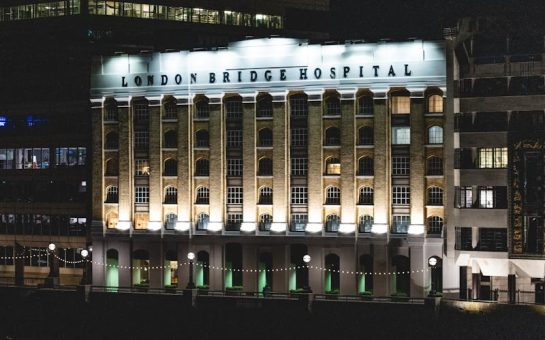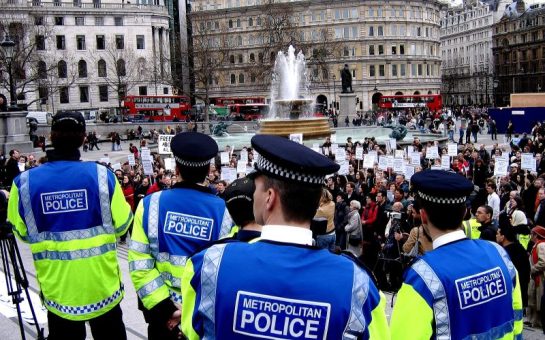London currently has the lowest rates of intentional self-harm across England and Wales, according to new data released by the Office of National Statistics.
Between 2021 and 2023, 467 per 100,000 Londoners self-harmed, according to age-standardised rates compiled by ONS.
This works out to a total of more than 16,500 individuals who have intentionally self-harmed – classified by ONS as the number of people who have been admitted to hospital or attended A&E at least once for intentional self-harm.
This rate is half the numbers of the North East, which saw 945 cases of intentional self-harm per 100,000 people – the highest rate across England and Wales.
London also has a 15% lower rate of intentional self-harm than the West Midlands, which has 555 per 100,000 – the second lowest rate across England and Wales.
London’s rate of self-harm was also 30% lower than the national average.
Therapist and Co-director of Wanstead Mental Health Clinic Siobhain Crosbie said: “The standards in this country in relation to mental health are absolutely dire.
“London may be better and it has a lot more resources and accessibility but it’s still horrific.”
Self-harm rates broken down by sexuality
The ONS dataset was the first to analyse self-harm and suicide by sexual orientation, finding that people who identify as lesbian, gay, bisexual or other sexual orientations (LGB+) are two and a half more times more likely to self-harm than those identifying as straight or heterosexual.
This trend is also reflected in London’s rates of self-harm, with LGB+ people 2.3 times more likely to self-harm than straight or heterosexual people in the capital.
Crosbie said: “It’s a very difficult thing for young adults to open up and share their sexuality, especially when some parents do reject their children.
“So a lot of LGB+ people would come to a city like London because there is a safety psychologically in coming to a city that just allows them to feel easier in themselves.
“But accessibility is still horrific and it’s impossible to provide affordable therapy like at Wanstead Mental Health Clinic without support from donations or bursaries.“
This difference is exacerbated when the data is broken down further, as lesbian women are nearly three times more likely to self-harm than straight women.
The gap between men and women in rates of self-harm is also magnified within the LGB+ community as lesbian women are 2.4 times more likely to self-harm than gay men.
Mind’s Information Content Manager Rosie Weatherley said: “We know that LGBTQIA+ people are more likely to experience mental health problems due to difficult experiences, like discrimination and stigma.
“Being LGBTQIA+ isn’t a mental health problem, and doesn’t cause mental health problems.
“But experiences like homophobia, biphobia, transphobia, acephobia and stigma towards non-binary people and intersex people can all affect mental health.”
A deeper analysis
The ONS dataset further breaks down the rates of self-harm into age, disability and country of birth.
This shows that 16 to 24 year olds are at more than a 55% higher risk of self-harm than 25 to 34 year olds, and within the 16 to 24 year old group LGB+ members are at a 63% higher risk than straight or heterosexual people.
Emily Kidd, 22, suffered with suicidal thoughts and has previously self-harmed following feelings of isolation and anxiety leading up to and during COVID.
She said: “I think the fact that I’m a woman meant that in some cases I was taken less seriously by healthcare professionals, like blaming it on hormones or periods instead of understanding that it was more than just that.”
After an attempted suicide before her 18th birthday, Emily sought help for her mental health but kept it a secret from her parents.
She added: “My family were very supportive physically but because I didn’t like to talk about how I feel they struggled to support me mentally.
“I think that talking about mental health needs to be normalised in schools through talks and discussions so that people feel less scared to mention it.”
The data also shows that in London those identifying as LGB+ that were born in the UK are almost twice as likely to self-harm as those identifying as LGB+ that were born outside of the UK.
Londoners with a disability that limits their day-to-day activities a lot are also eight times more likely to self-harm than those without a disability.
The most at risk group across the whole dataset is bisexuals with a disability that limits their day-to-day activities a lot who have a rate of 5,059 per 100,000, double the rate of straight people with the same disability severity and 2.7 times higher than bisexuals with a less severe disability.
Rethink Mental Illness’ Head of Suicide Prevention Lourdes Colclough said: “Certain groups within the LGBTQIA+ community will face double discrimination, whether that’s because of their gender, race, ethnicity or age, putting them at further risk of poor mental health.
“To change this, we need meaningful action to create inclusive services, provide early support, and build a society where every LGBTQIA+ person feels safe, valued, and heard.”
Anyone struggling with their mental health can contact the Samaritans for free on the phone at 116 123 or via email at [email protected].
Featured image via Freepik.





Join the discussion